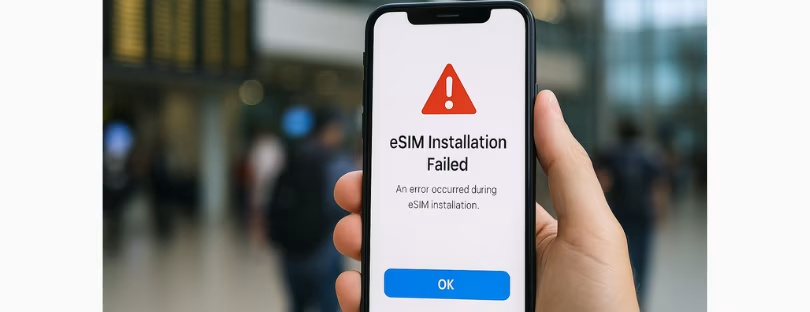
eSIMs are one of the best ways to stay connected while travelling – here’s how to choose
eSIM ‘s, digital versions of traditional SIM cards, have changed the game for travellers who want to stay connected. best way to stay connected while travelling
They’re industry-standard and electronic, which means both Android and Apple have adopted them – and they’re hiding in all modern smartphones, waiting to be activated via third-party service provider apps.
Simultaneously, a slew of new mobile apps use eSIMs to make activating mobile plans in your destination country a simple process. This means no more activating and roaming on your home network at astronomical rates. And there is no need to describe your requirements in broken English at a corner shop abroad.
Instead, you simply need to determine if your phone can accept eSIMs and then track down an app – and a data plan – that suits your needs.
For the most part, it’s as easy as that – although there are a few things to keep in mind – including new travel bundles from your service provider might be cheaper than most eSIM options, depending on your end destination. But if your local service provider doesn’t offer travel bundles, and you like the control and variety provided by eSIM apps, you’ll need a compatible smartphone.
Most smartphones manufactured in the last five years have eSIM capability, but it pays to double-check before buying an eSIM package.
You’ll also need a phone that isn’t network locked – which is no longer an issue in many countries but may be with some phones.
Checking if your iPhone is eSIM compatible
Compatible iPhones: iPhone SE (2020) and iPhone SE (2022) to iPhone X, iPhone 11, iPhone 12, iPhone 13, iPhone 14, and iPhone 15 accept eSIMs.
You can confirm both by navigating to the following in your iPhone menu:
Settings > General > About Scroll to Carrier Lock An unlocked device shows “No SIM restrictions” Scroll to Available SIM or Digital SIMPhones that support eSIMs show a 15-digit IMEI number.
Checking if your Android is eSIM compatible
Given their fragmentation as open-source software, Android compatibility is slightly less predictable. Most eSIM developers publish a full list of compatible devices on their websites.
You can also check if your Android phone accepts eSIMs in your device settings:
Settings > About > Status
If your Android phone is eSIM compatible, an EID field will be visible. If not, your Android device isn’t eSIM compatible.
Once you’ve established that your phone is eSIM compatible, you must pick an app to activate it. Through this app, you’ll also purchase a mobile data plan, the cost of which varies.
Choosing an eSIM best way to stay connected while travelling
Several eSIM apps are competing for travellers’ credit card details, and picking one is tricky.
And if you’re travelling across several, some also offer regional packages for multiple countries, saving you activating a new eSIM every time you cross borders and connect to a new network.
Not all eSIM providers offer access to all networks within a country, either. This means you might buy an eSIM for a network provider with very poor coverage in your end destination, rendering it mostly useless.
Checking this is pretty niche and time-consuming, so most users will likely take the leap of faith with what’s available. But if staying connected is critical, it’s worth factoring in your specific destination, which service providers your eSIM carrier offers, and how good their coverage is where you’ll be located.
It’s important to note that each eSIM offers different validity, usually between seven and 30 days, but sometimes up to one year. And some are even with no expiration (BNESIM).
For the most part, international roaming should never factor into your travel plans – with one exception. best way to stay connected while travelling
Picking a solution best way to stay connected while travelling
If you’re planning to travel and want to stay connected, chances are there’s more than one eSIM option that will assist – plus the potential for a local travel bundle – little to pick between them.
Most important is picking a reputable provider, checking data rates, and finding a validity time suitable for your trip. Most smaller bundles are valid for seven days, and packages of 3GB or more usually last 30 days or longer.
And if you’re crossing multiple borders within a region, it may be worth investigating regional packages that will keep you connected throughout.
A good starting point for comparing all is an eSIM comparison website, like eSIM DB, which collates available eSIM packages and can filter them according to your destination and requirements.















